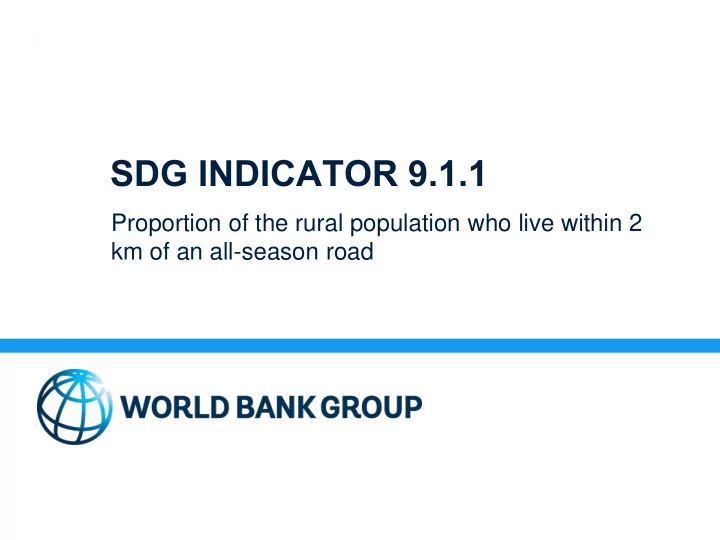

SDG INDICATOR 9.1.1 Proportion of the rural population who live within 2 km of an all-season road
9.1.1 Rural Access Index Goal 9 • Build resilient infrastructure, promote inclusive and sustainable industrialization and foster innovation Target 9.1 • Develop quality, reliable, sustainable and resilient infrastructure, including regional and trans-border infrastructure, to support economic development and human well-being, with a focus on affordable and equitable access for all Indicator 9.1.1 • Proportion of the rural population who live within 2 km of an all- season road 1
Initial work based on surveys • First developed in 2006 by Roberts et al • Global estimated of 68%: 1 billion people unconnected • Based on household surveys and models • But sample surveys are inconsistent, and concept of "all season road" tricky to implement • Can produce national/global estimates, but samples not useful to guide national roads investment planning 2
New methodology using spatial datasets Where do rural people live? Censuses, but new global population datasets available e.g. WorldPop, Landscan of OakRidge, GRUMP (rural population, by CEISN) Where are roads? Georeferenced road network: government datasets, supplemented with other mapping sources e.g. Openstreetmap. Are they in good condition? Data available, but fragmented: road asset management systems, road inventory surveys. Weakest area, possible to supplement with satellite data, other tools e.g. RoadLab app. Combine these datasets with GIS 3
Results from 8 pilot countries Provides national and sub-national estimates: very important for planning road investments 4
Next Steps • Publish detailed report assessing data sources, methodology, robustness, correlation with poverty, etc. • Invite NSOs, other country partners, and international community to scrutinize the approach • Apply the method to more countries (target is 30) 5
Recommend
More recommend